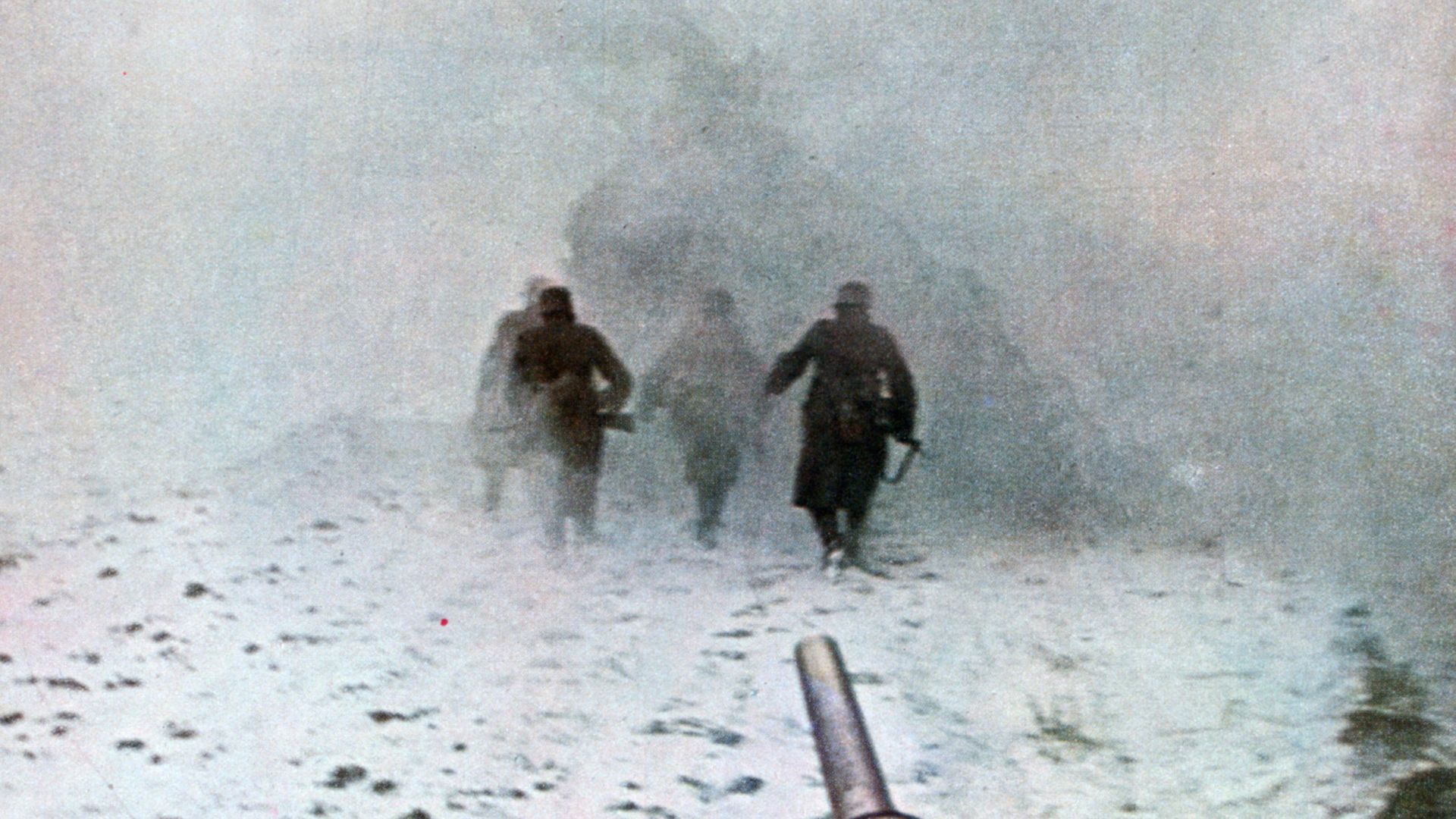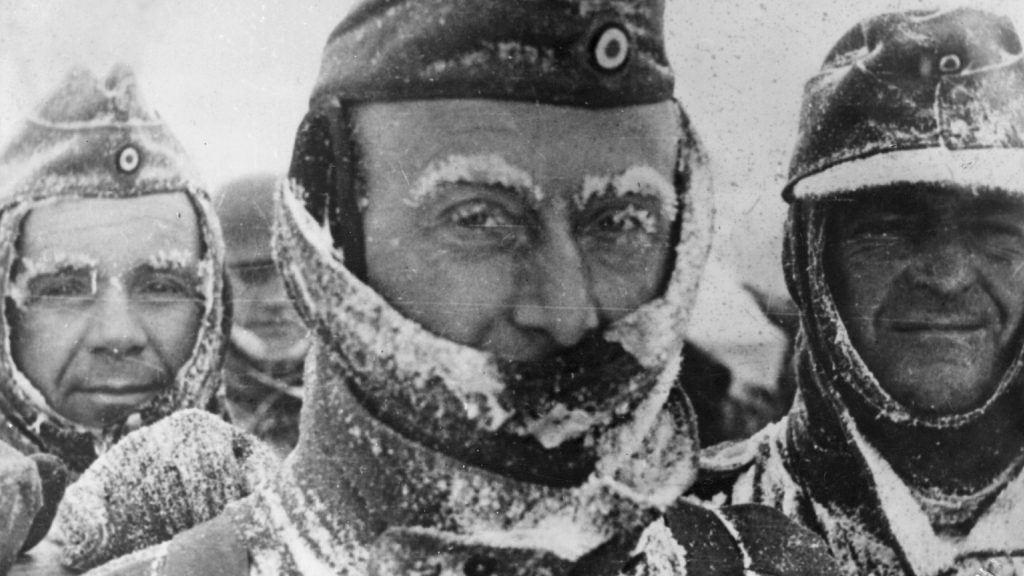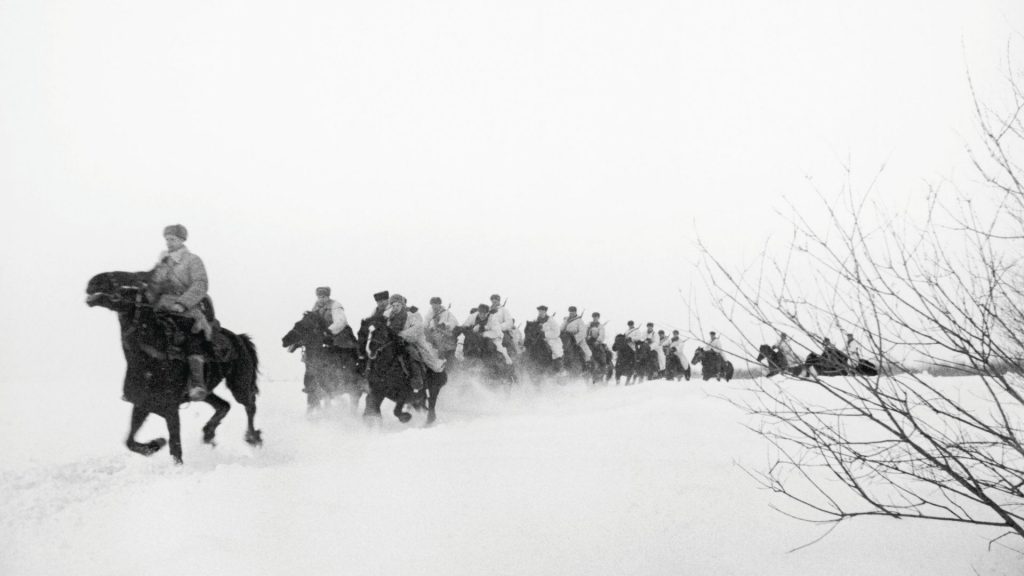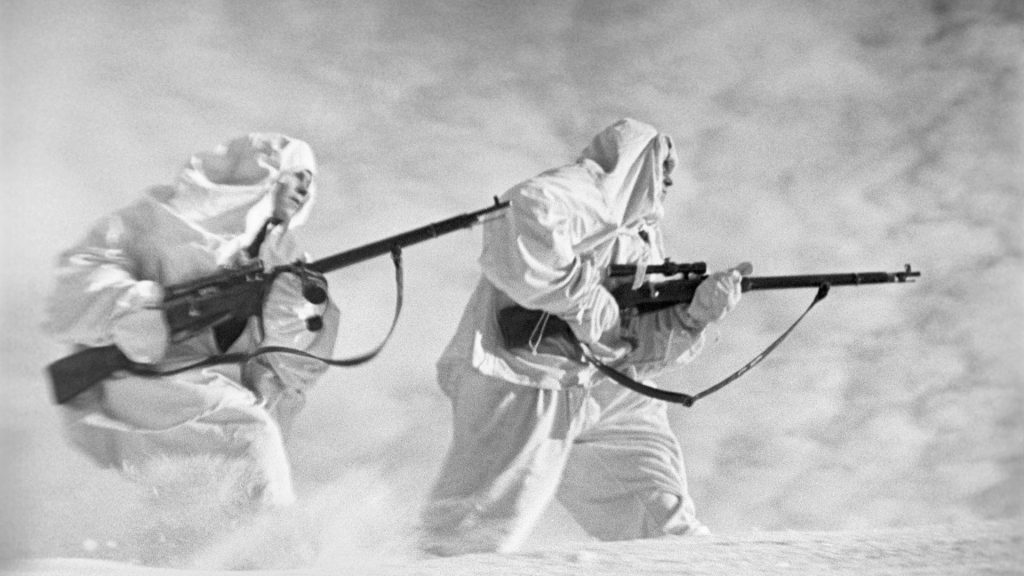
Eighty years ago this week Nazi Germany invaded the Soviet Union, launching the most decisive clash of the Second World War. JONATHAN DIMBLEBY, author of a new book on the campaign, explains what was at stake and the consequences we live with today
Hitler’s invasion of the Soviet Union in the early hours of June 22, 1941, was the biggest, bloodiest and most barbarous military enterprise in the history of warfare.
Operation Barbarossa, as the Führer codenamed his vainglorious enterprise, was also the most decisive campaign of the Second World War. Had he achieved its objective – the annihilation of the Soviet Union – he would have been the master of Europe’s destiny.
As it was, by the time his armies reached the gates of Moscow less than six months later, any prospect he might once have had of realising his delusional vision of a One Thousand Year Reich had already vanished.
This was initially far from clear. The three-pronged assault by more than three million men along a thousand mile front from the Baltic to the Balkans punched gaping holes through the Red Army’s chaotic defences and began to blitz a path towards Leningrad, Moscow and Kiev at astonishing speed.
It was widely presumed in London and Washington – as well as in Berlin – that the Red Army would collapse within weeks. The Nazis had no doubt that the ‘Judaeo-Bolshevik conspiracy’ would be extirpated, and that ‘Lebensraum’ for the Aryan people would be established on the territories currently occupied by the ‘sub-human’ Slavic races.
But within a month of the invasion General Franz Halder, the German army’s chief of staff, began to realise that it would not be quite so easy. In mid-July he noted that the enemy was “fighting with savage determination”.
A few days later, a discerning frontline general, Gotthard Heinrici, wrote: “There is no sign of an end at the moment, despite the victories, we have won… it does not seem as if the Russians’ will to resist is broken or that the people want to be rid of the Bolshevik leaders.” It was already clear that the Red Army’s will to resist was far greater than anyone had anticipated.
Triumphalism was confined to the Fuhrer’s sycophantic inner circle of intellectually paralysed military advisors, nourished by the forlorn columns of Soviet prisoners of war stumbling towards captivity (where some three million men would be die from hunger and disease or summary execution).
But in August, the advance began to slow. Even Hitler realised the Wehrmacht lacked the resources to advance simultaneously on all fronts. There was a pause of several weeks while, to the deepening dismay of the Army commanders, Hitler dithered as between heading south for the riches of the Ukraine or destroying Moscow. This gave the Soviet armies precious breathing space. Stalin’s armies still fell back but did so in better order. The Blitzkrieg became a slog.
The savagery of the struggle – in contrast to the later battles in Western Europe, where the ‘Anglo-Saxons’ were at least regarded by the Nazis as belonging to the same race – was horrific in character and scale. Indoctrinated to regard the Slavs as a subhuman species, Hitler’s soldiers subjected their Soviet tormenters to hideous extremes of cruelty off as well as on the battlefield.
And atrocity begat atrocity. Russian troops behaved with a similar disregard for basic humanity. In their case, though, the barbarism was ignited a deep anger that the ‘fascist’ invaders had stolen their lands, torched their homes and barns, bombed their villages, and murdered untold numbers of their ‘sub-human’ families, friends, and fellow citizens.
Behind the German front, Himmler’s Einsatzgruppen – ‘task forces’ – were licensed killers initially charged to hunt down and eliminate Soviet political commissars, partisans, and their sympathisers.
This rapidly morphed into the systematic targeting of the Jews. By the autumn, with the invaluable assistance of local communities and police auxiliaries in Latvia, Estonia, Lithuania, Poland, Ukraine and the Balkans, Himmler’s death squads had rounded up and executed scores of thousands of Jewish men, women, and, in growing numbers, children and babies as well.
Their bullet-riddled bodies were thrown into hastily dug pits usually concealed in the forests just beyond the towns and villages where they had lived. It was soon realised, though that this was both an inefficient and stressful form of mass murder. By the end of the year, by which time the first one million of the six million had been slaughtered, the first gas chambers were either under construction or already in operation.

Most of Hitler’s senior commanders were complicit in the Einsatzgruppen’s atrocities but, by late October, their main focus was on the bone-weary trudge towards Moscow.
It only took the onset of winter to further lower the sinking morale of the men under their command. The Rasputitsa – seasonal severe weather conditions – turned dirt roads into glutinous mud. Heavy vehicles slid into shell craters concealed by pools of water. Horses pulling artillery transporters, floundered and fell, still trapped in the shafts. Stricken carts became entangled in a confusion of ropes and chains. The advance slowed to a crawl.
The rains were followed by snow and ice. Presuming that Operation Barbarossa would be a walkover, the Wehrmacht had failed to provide the troops with winter clothing. As temperatures plummeted towards minus 30C and some cases as low as minus 40C, the invaders began to freeze. Frostbite became endemic. Toes, feet, and, some cases, legs had to be amputated to avoid gangrene. Frozen corpses littered the landscape.

Hitler’s generals would later blame the weather rather than their failure to plan ahead for the military quagmire in which they had trapped themselves. They were not only short of clothing, but supplies of food and fuel.
Many of their units were drastically under strength. They had run out of spare parts and replacement vehicles. They had fatally under-estimated both Russian patriotism and the fact that the Soviet dictator could summon a virtually limitless supply of young men to defend the Motherland while his factories could churn out greatly improved weaponry at an ever-increasing rate. Hitler’s vaulting ambition had o’er leapt itself.
It is possible that a few German soldiers caught a glimpse of the Moscow skyline but the Panzers never got closer than 20 miles from the Kremlin. In early December, Operation Barbarossa reached its fateful terminus. Retreat was inevitable.
It was “heartbreaking and humiliating” Halder noted in his diary. By this point – though the struggle on the Eastern Front would last for a further three and a half years and cost many millions more lives – the Nazis had lost any realistic chance of winning the Second World War.

Disconcerting though it must be for those who – for understandable reasons – believe that Hitler was defeated by those valiant men who landed on the Normandy beaches on June 6, 1944, the evidence is otherwise.
Operation Overlord assuredly accelerated Stalin’s victory over Hitler but – at an unbearable cost to human life – the Wehrmacht had already been fatally wounded by the Red Army long before D-Day.
The great historic debt owed to those who fought their way doggedly through France to Berlin is not so much that they defeated the Nazis but that they saved Western Europe from the tyranny of Joseph Stalin whose armies had already saved us from Adolf Hitler.
This may be unpalatable but we would do well to remember this history as we seek to understand better the fractious relationship between our Western democracies and Putin’s Russia.
Barbarossa: How Hitler Lost the War, by Jonathan Dimbleby, is published by Penguin
What do you think? Have your say on this and more by emailing letters@theneweuropean.co.uk
Warning: Illegal string offset 'link_id' in /mnt/storage/stage/www/wp-includes/bookmark.php on line 357
Notice: Trying to get property 'link_id' of non-object in /mnt/storage/stage/www/wp-includes/bookmark.php on line 37






